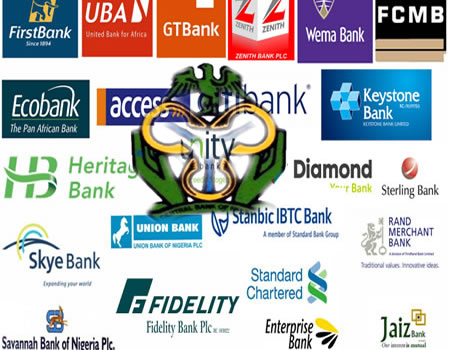Published
4 years agoon

Bank loans to the different levels of government and the national economy have continued to grow steadily as the banking sector moves to put its non-performing loans under control.
The total loans taken by the federal, states and local governments from banks rose to N954.27 billion as of the end of March.
The Central Bank of Nigeria (CBN) disclosed this in its report, entitled ‘Quarterly Statistical Bulletin-Commercial and Merchant Bank Accounts,’ which was obtained at the weekend.
According to the report, the Federal Government borrowed N93.56 billion while the states and local governments borrowed N860.7 billionn in the period under review.
Total loans by the banking sector to the entire economy stood at N17.5 trillion as of Q1, 2020.
The report showed that the loans by the Federal Government dropped from N132.14 billion at the end of 2018 to N92.22 billion at the end of 2019, while states and local government’s borrowing rose from N758.69 billion to N885.49 billion within the same period.
The total credit to the economy rose to N18.6 trillion as of the end of April 2020, according to the latest report released by the CBN.
Godwin Emefiele, the CBN Governor, emphasised the need for more lending to the real sector as banks’ credit to the economy rose.
He said, “Again, the observed growth in credit illustrates the continued potency of the bank’s Loan-to-Deposit Ratio policy and the need to sustain credit flows to the private sector, especially at this critical time when the economy needs to indefatigably support its productive machinery.
“I note the continued moderation of non-performing loans from 11 per cent in April 2019 to 6.6 per cent in April 2020 amidst growing private sector credits. This underlined our continued drive to de-risk lending.
“I re-echo the imperatives of enhanced credit flows to strategic and high-impact private sector ventures through an effective collaboration of all stakeholders, especially on the backdrop of the imminent economic downturn.”
At the last Monetary Policy Committee (MPC) meeting, a member of the committee, Kingsley Obiora, said the banks’ financial system indicators were encouraging, with improvements to real sector lending, reflecting the bank’s loan-deposit ratio (LDR) policy.
However, there were risks and vulnerabilities in the short to medium term, which included persisting new cases of coronavirus disease and low oil prices, he noted.
Although downside risks abound, he added that his overall outlook for the economy was more optimistic than most analysts seemed to portray.
He said, “I believe that while the economy will record significant deceleration in the second quarter of the year, a strong rebound could be recorded in the third, reflecting the effects of many of the measures the central bank is putting in place at the moment.”
Adamu Lametek, another member of the MPC, said falling prices in the oil and gas sector, which gulped 26 per cent of the credit in the banking sector, exposed the banks’ risk exposure to non-performing loans.
He said in March, the price of crude oil, Nigeria’s most important export commodity crashed, forcing immediate fiscal adjustments.
“The oil price shock continued to reverberate through the economy from the oil and gas sector. The banking system is heavily exposed to the sector.
“In April 2020, credit to the oil and gas sector accounted for about 26 per cent of the industry’s total loans and advances, making the sector the single most important in terms of credit exposure of the banking system.”
Related to this source of vulnerability, he added, was the foreign currency exposure of the industry which stood at approximately 41 per cent in April.
He said, “Low oil prices translate directly to low resources in the oil and gas sector and reduced foreign exchange inflow to the economy. Therefore, protecting the financial system remains a priority going forward.”
Lametek said though key banking system financial soundness indicators – capital adequacy ratio, non-performing loans ratio, and earnings, among others-had been quite robust, the industry was not insulated from the adverse impacts of the global economic and financial weakening arising from COVID-19 and soft oil prices.
According to him, loosening the stance of monetary policy offered some relief to the entire financial sector, not just banks but even more critically to the equities market that had shed about 11 per cent in value, year-to-May 2020.
In addition to easing the lockdown and restoring supply lines, he said the exchange rate of the naira would be a key factor in the short-term evolution of inflation and output.
He said, “A key lesson from the 2016 stagflation was that stability of the naira exchange rate would be a critical element of the policy mix for rapid recovery from the COVID-19 economic setbacks.”
He said this would be helpful to sustain and deepen extant foreign exchange management policies including strategic interventions in all segments of the FX market.
This, he added, would ensure adequate liquidity, incentivising autonomous inflows and prioritising supply for imports of end products and intermediates that could not be sourced locally.














